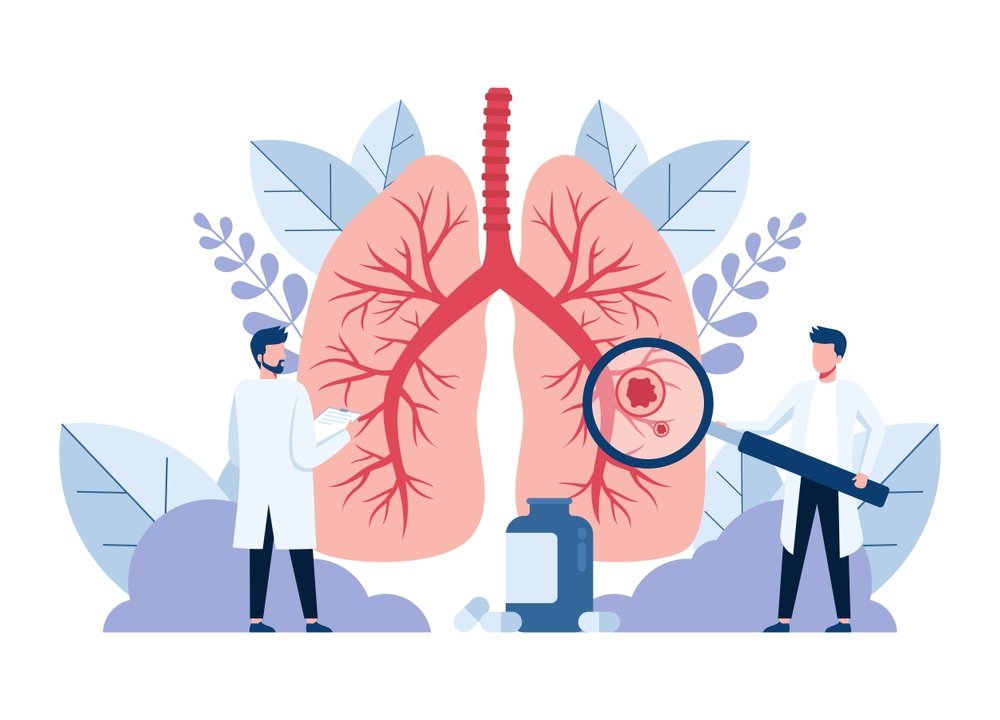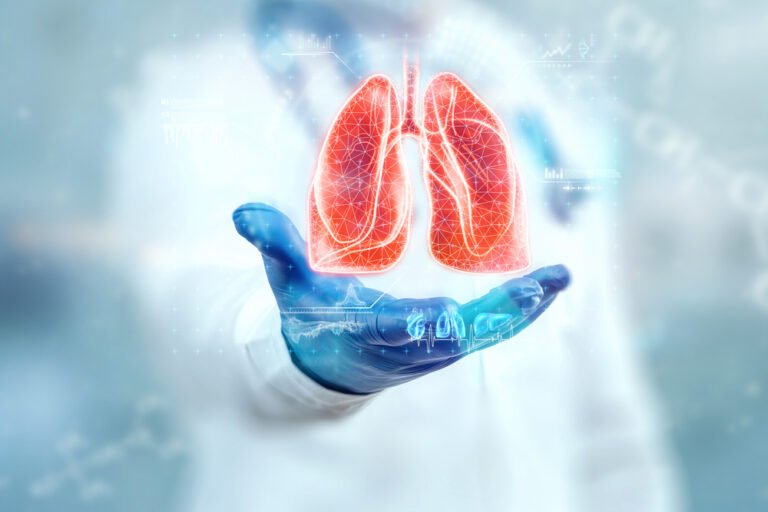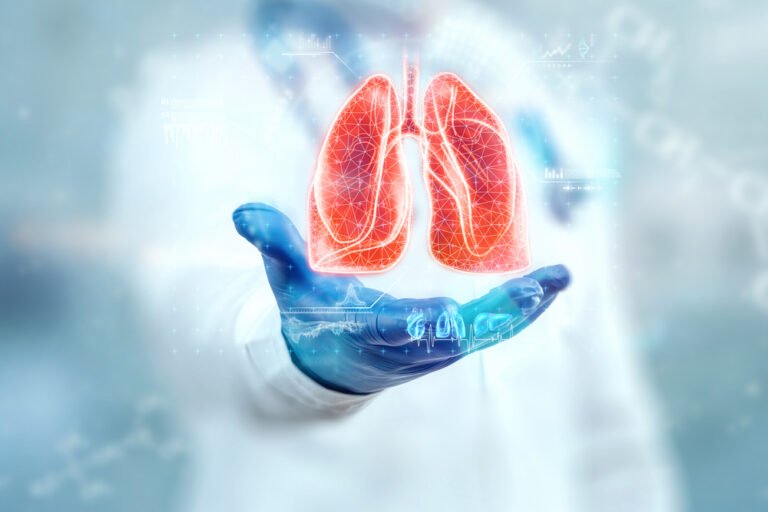Lung cancer remains an important cause of cancer death throughout the Western world and smoking is the leading cause of lung cancer.
What is Lung Cancer?
There are two groups of Lung Cancer:
- Small Cell Lung Cancer (SCLC) , most aggressive,15% of all lung cancers ,exclusively in smokers
- Non-Small Cell Lung Cancer (NCLC) 85% of all lung cancers, in non-smokers, females
- Adenocarcinoma
- Squamous cell carcinoma (SCC)
- Large cell carcinoma (LCC)
- Bronchoalveolar carcinoma (BAC)
Some lung cancers never seem to be associated with tobacco. An example is bronchoalveolar-cell carcinoma (BAC), which mimics a chronic unresolving pneumonia. These tumors spread within the lung and the majority do not spread to other body organs. SCC, LCC and SCLC are strongly associated with smoking. Adenocarcinoma is found in nonsmokers.
Causes of Lung Cancer
Major Causes of Lung Cancer include the following:
- Active Smoking
- Passive smoking
- Asbestos
- Radon
- Arsenic
- Air Pollution
- Genetic factors
Lung Cancer Due to Active Smoking
Smoking affects lungs primarily due to the toxic chemicals present in tobacco smoke. There are 55 substances in cigarette smoke that are carcinogenic along with other agents like hydrogen cyanide, ammonia and carbon monoxide that all damage the lungs.
Statistics of Lung Cancer due to Smoking & other Reasons:
Lung cancer remains an important cause of cancer death throughout the Western world and smoking is the leading cause of lung cancer. 2nd most common cancer in men and women (Cancer prostate and Cancer breast at top). Most people diagnosed with lung cancer are 65 or older; a very small number of people diagnosed are younger than 45.
The average age of people when diagnosed is about 70 years. Overall, the chance that a man will develop lung cancer in his lifetime is about 1 in 15; for a woman, the risk is about 1 in 17. These numbers include both smokers and non-smokers. For smokers the risk is much higher, while for non-smokers the risk is lower.
There are around 243,000 deaths from lung cancer each year in European Union (EU) countries. The highest male lung cancer incidence and mortality rates are found in Hungary, Poland and Belgium, with the lowest rates in Sweden and Portugal. Amongst females the highest lung cancer incidence and mortality rates are found in Denmark, Hungary and the UK, whilst the lowest are in Spain, Portugal and Malta.
In the USA lung cancer is the primary cancer killer in both men and women. In the USA men have higher rates of lung cancer than females. The age adjusted death rate in the black population was 12% greater than the rate in the white population. Countries of the developing world and the ‘boom’ economies of the Far East and the Indian sub-continent, lung cancer rates remain low compared to those seen in the USA and Europe.
Small cell lung cancer is most aggressive and is seen exclusively in smokers and ex- smokers while adenocarcinoma is seen in non-smokers and females. The increasing use of low-tar cigarettes and filters may be responsible for the rise in frequency of adenocarcinoma. As a proportion of all cancers, this particular form has increased from about 15 to 30% in the last 20 years. The risk of lung cancer for long-term pipe smokers and the habitual cigar smoker is lower, but these forms of smoking do also cause cancer, as the smoke is inhaled further out into the lung as the smoker tends to inhale more deeply.
Correlation between smoking and lung cancer statistics:
The lifetime risk of a continuing smoker developing lung cancer is approximately 1 in 15, whereas for a lifelong non-smoker it is 1 in 200–300. If people quit smoking at 50 years of age, they reduce their lifetime risk to approximately 1 in 30. The risk of developing lung cancer for a current smoker of one pack per day for 40 years is approximately 20 times that of someone who has never smoked
Lung Caner Due to Second hand smoking/ Passive smoking
There is strong epidemiological evidence that the relative risk to long-term passive smokers is 20–30% above baseline for a spouse or partner, and higher for workplace exposure, and that this causes about 600 lung cancer deaths yearly in the UK.
Breathing secondhand smoke is equivalent to smoking i.e.
- Two hours in a smoky office equal to smoking four cigarettes,
- Two hours in a smoking section of restaurant equals to smoking two cigarettes
- Living together with a pack-a-day smoker for 24 hours means smoking at least three cigarettes.
- Second-hand smoke also has serious and often fatal health consequences. Nonsmokers who are exposed to secondhand smoke at home or at work increase their risk of developing heart disease by 25-30%, stroke by 20−30% and lung cancer by 20-30%.
- Pre-term delivery & low birth weight babies are common in females due to second-hand smoke.
Percentage exposed to second hand smoke (%):
- ADULTS EXPOSED TO TOBACCO SMOKE ON PUBLIC TRANSPORTATION ARE 76.2%
- ADULTS EXPOSED TO TOBACCO SMOKE IN HEALTH CARE FACILITIES ARE 73.6%
- ADULTS EXPOSED TO TOBACCO SMOKE IN RESTAURANTS ARE 86%
- ADULTS EXPOSED TO TOBACCO SMOKE AT HOME AT LEAST MONTHLY ARE 48.3%
- ADULTS EXPOSED TO TOBACCO SMOKE AT THE WORKPLACE ARE 69%
Lung Cancer due to Asbestos
Asbestos is the general term for a group of naturally occurring fibers composed of hydrated magnesium silicates used for a variety of construction and insulating purposes.
Asbestos fibers are divided into two categories based on their shape.
- Serpentinefibers, of which chrysotile is the main commercial variety, are long, curly strands. Chrysotile accounts for over 90 percent of the asbestos in commercial use in the United States and is generally considered less toxic than the amphibole fibers
- Amphibolefibers (crocidolite, amosite, tremolite, and others) are long, straight, rod-like structures. These fibers are more carcinogenic.
As examples, exposure to asbestos resulted from involvement with the following.
- Mining and milling of the fibers
- Industrial and occupational applications of asbestos (e.g, work with textiles, cement, friction materials, insulation, shipbuilding)
- Nonoccupational exposure to airborne asbestos (eg, regular exposure to soiled work clothes brought home by an asbestos worker, renovation or demolition of asbestos-containing buildings, environmental exposure in the neighborhood of industrial sources, and natural environmental exposure to geological sources)
Commercial use of asbestos is banned in many countries. In the United States, asbestos use has been limited since the 1970s, but is still permitted in automotive brake pads and gaskets, roofing products, and fireproof clothing. Mining of asbestos is ongoing in several countries, most prominently Russia, China, Brazil, and Kazakhstan.
Some studies were conducted that showed clear association between asbestos and lung cancer. One of those was a Dutch cohort study of 58279 men that showed 524 cases of lung cancer due to exposure to asbestos. A systematic review and metaanalysis found an increased risk of lung cancer associated with environmental exposure to asbestos , especially in neighborhood near asbestos mines and factories.
The risk of lung cancer associated with asbestos is greatly magnified by coexisting exposure to tobacco smoke. Risk of dying of lung cancer increases to 16-fold if person smokes more than 20 cigarettes per day and 9-fold if smokes fewer than 20 cigarettes per day, compared with asbestos workers without a regular smoking history. The type of asbestos fiber affects the risk of lung cancer as well; the risk appears to be considerably higher for workers exposed to amphibole fibers than for those exposed to chrysotile fibers. Asbestos exposure increases the incidence of other neoplasms as well. Other malignancies that have been linked to asbestos include cancers of the larynx, oropharynx, kidney, esophagus, and biliary system. Asbestos is the only known risk factor for malignant mesothelioma.
What are the Symptoms of Lung Cancer?
Lung Cancer symptoms are as follows:
- Cough
- Weight Loss
- Shortness of Breath
- Blood in Sputum
- Fever
Lung Cancer due to Radon
Radon is a gaseous decay product of uranium-238 and radium-226, which is capable of damaging lining of airways via the emission of alpha particles. The increased risk of lung cancer among uranium miners has been more clearly established and is thought to be due to radiation from radon.
Radon is present in soil, rock, and groundwater, and it can accumulate in homes. Exposure to radon within the home may play a role in the development of lung cancer in never smokers, although this is controversial.
It is a naturally occurring radioactive gas that leaches out of granite. Therefore, people living in houses built upon granite are at an increased risk. This is of considerable importance in countries such as Sweden, and to a lesser extent in the south-west of the UK and in Wales.
Does Arsenic cause Lung Cancer?
It has been implicated as a cause of lung cancer where it contaminates drinking water, such as in some areas of Taiwan and Chile.
How Air Pollution Causes Lung Cancer?
Indoor air pollutants such as vapors from cooking oil and the smoke from burning coal have been linked to lung cancer, particularly in Asia.
Outdoor air pollution is also associated with lung cancer risk. A link between air pollution and lung cancer has been described in various studies. Air pollutants cause mutations in genes which in turn lead to lung cancer.
Lung Cancer due to Genetics Factors
Multiple studies have shown an association between lung cancer in never smokers and a family history of lung cancer, suggesting a role for genetic factors. Specific gene mutations have been identified in with high rates of lung cancer in never smokers. The best understood are gene mutations are in the EGFR (Epidermal growth factor receptor).
Lung Cancer Prevention other than treatments
These steps could play a vital role in prevention of Lung Cancer.
- Most important is to Quit Smoking
- Adopt healthy life style
- Breathing exercises
- Good diet.









